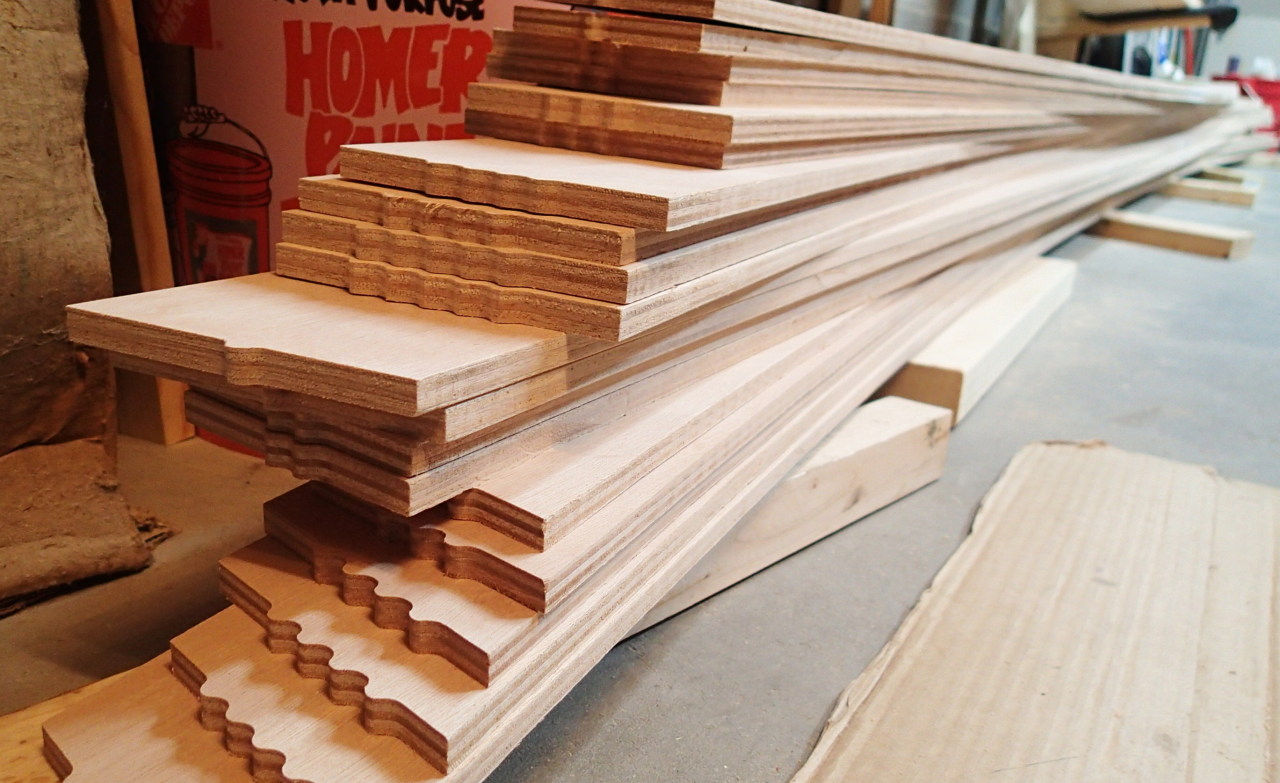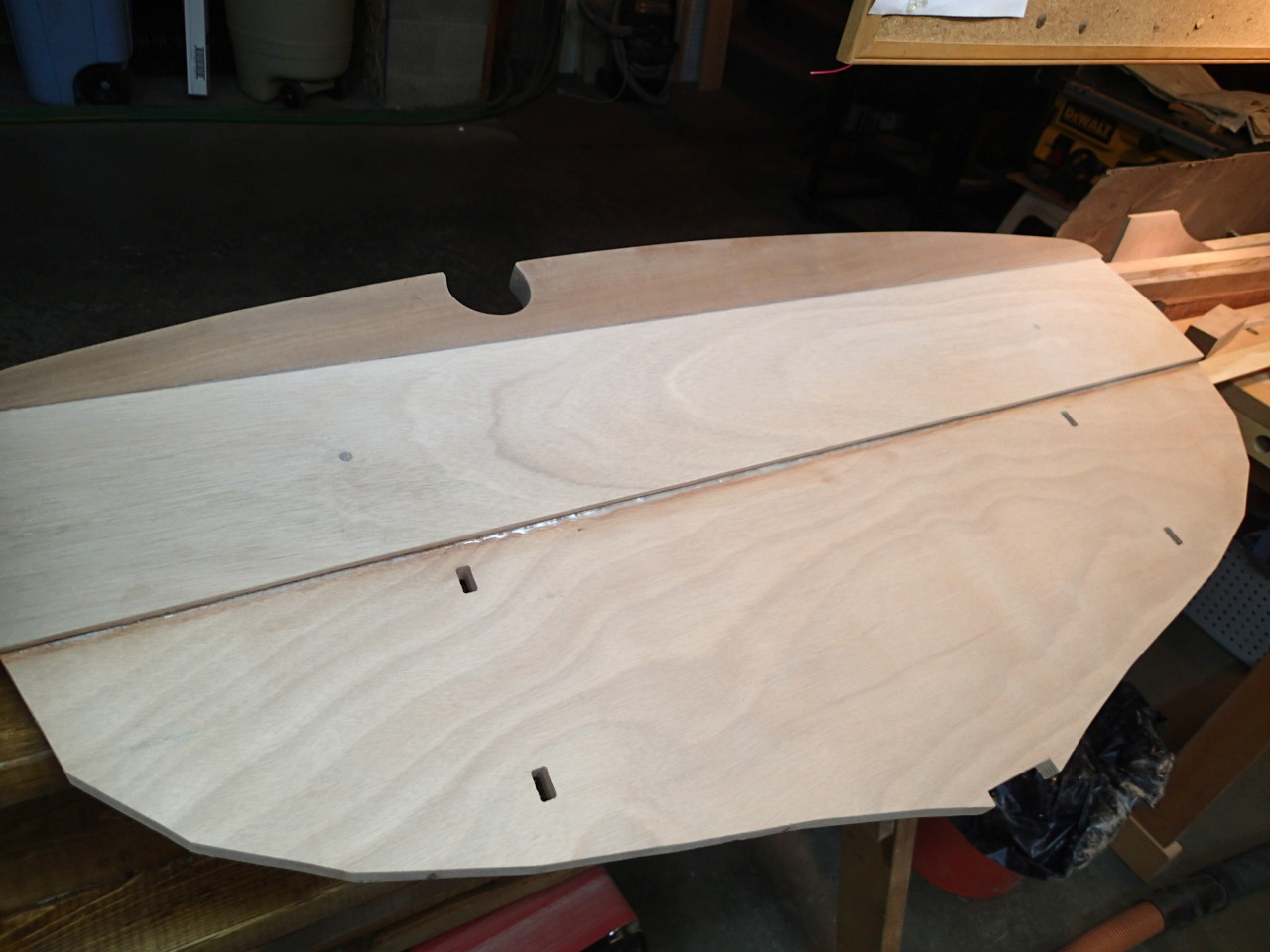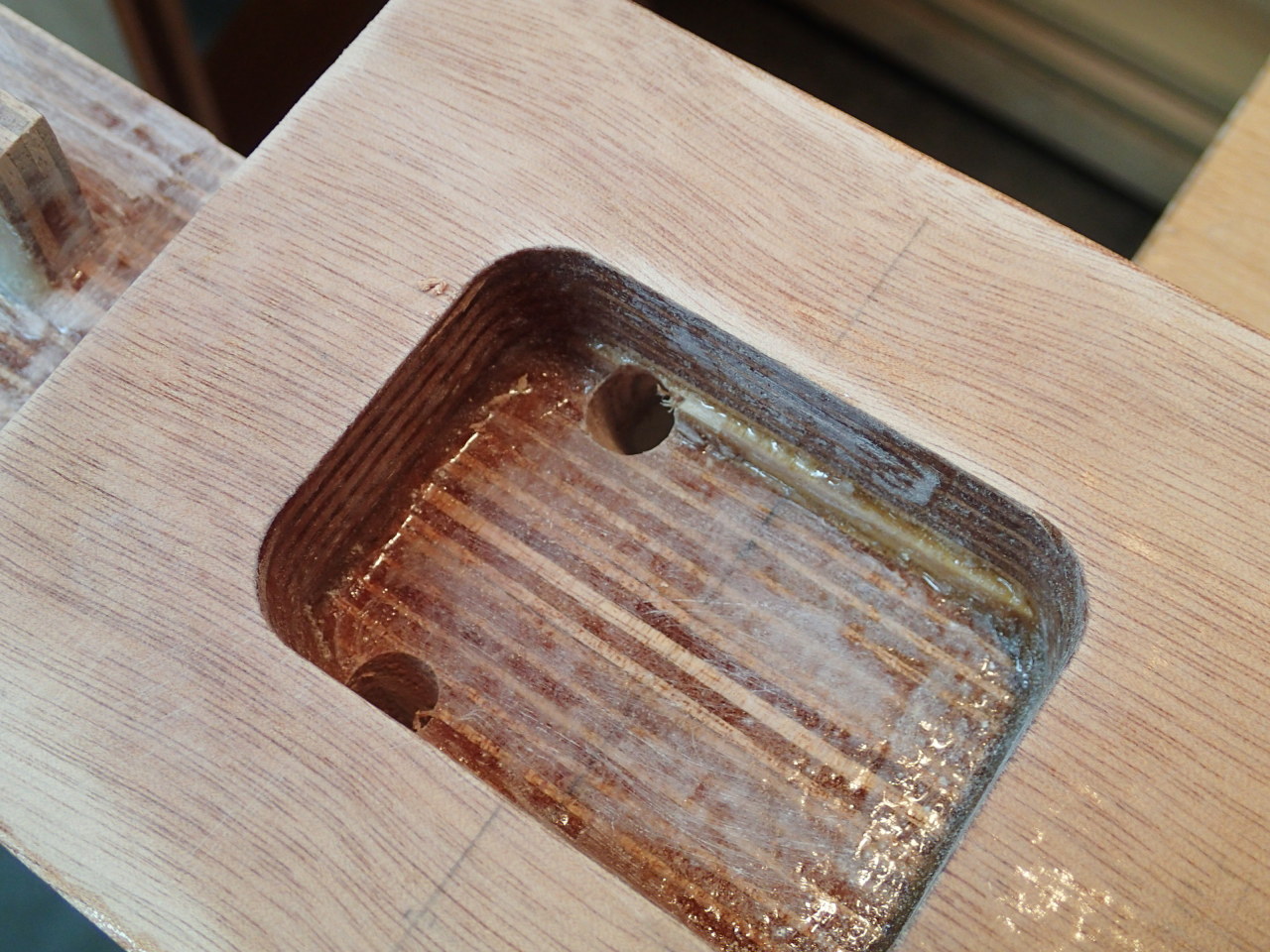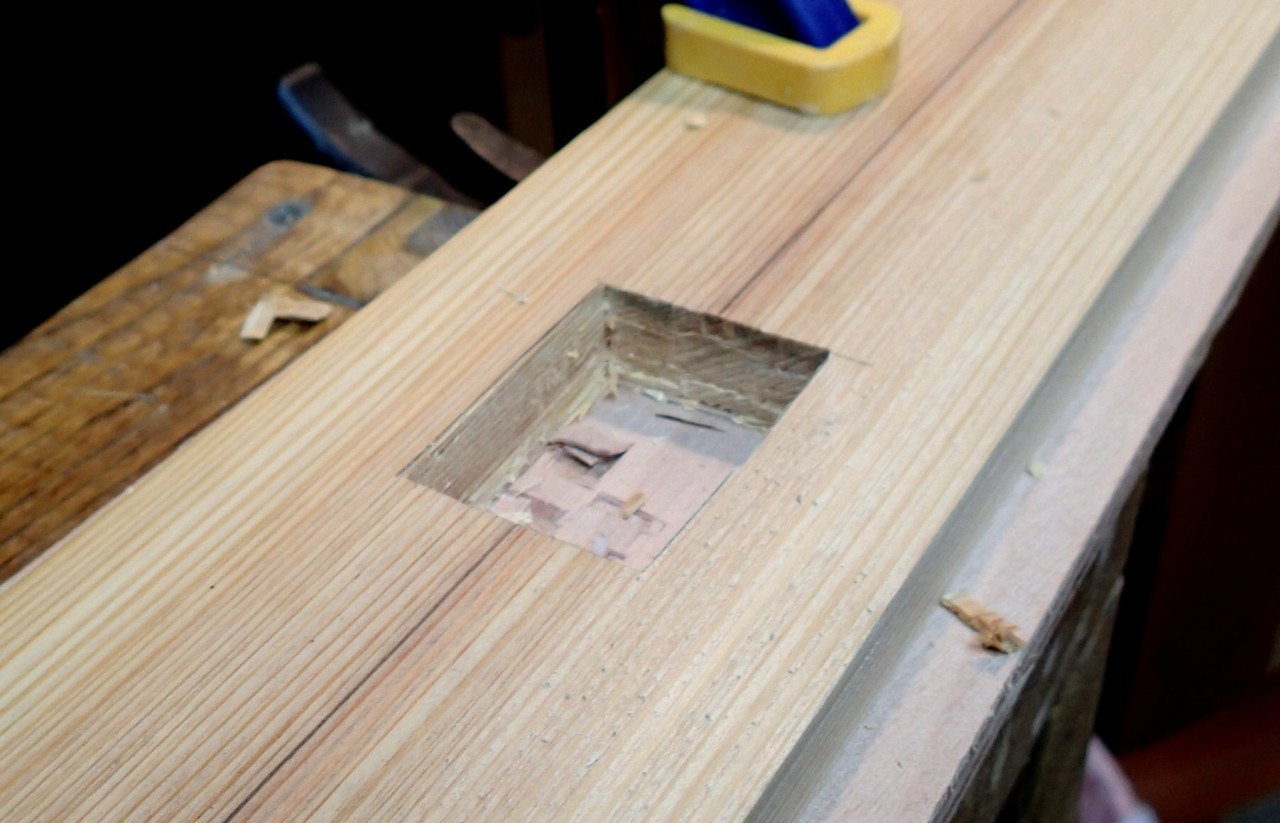Though the construction of the strong-back was one of the first tasks, the use of it for setting up the station molds (which currently populate countless areas in the basement and garage) will not commence until all preliminary tasks are completed.

For one it is of course a basic matter of task sequencing but equally importantly, the strong-back provides a very convenient, long platform for the construction of items which are needed prior to the assembly of the jig. The most obvious one, of course, is the gluing up the long planks which will become the strakes of the hull once the station molds are set up.
Ilur has ten strakes on each side, so there are 40 separate plank halves that get cleaned up, glued together and verified for matching curvature.
The new puzzle joint just recently redesigned by Francois Vivier make the fine tuning of each plank quite a bit easier since there really is no wiggle room to permit an "unfair" curve.
The bottom five planks received a fiber glass patch for extra reinforcement.
These patches will be sanded smooth but even so, they will be facing inboard.
I still have a number of planks to glue and clean up. My space constraints limit me to gluing up one pair at a time.

Then as previously mentioned the center board trunk needs to be prefabricated.
The design is simple, functional and ingenious.
The CB simply slides into two grooves on either side of the CB trunk and a bronze pivot bolt comes to rest at the bottom at the pivot point.
For extra insurance, I lined the slot with some carbon fiber tape to protect from abrasion.
After epoxying the inside walls with fiber glass reinforcement, I fill coated the fiber glass with several layers of graphite... once again to protect from abrasion.
F. Vivier called for a 14mm rod to act as the CB pivot. This will be inserted at the pivot point in the center board.
Just to make sure that I had a proper fit before gluing the trunk shut for ever, I ordered a 5/8" rod to test for size.
I am glad I did because when it arrived I realized immediately that it was way too big. The CB would have gotten wedged inside the trunk.
So I ordered a 1/2" bronze rod and filed one end smooth to prevent scratching and
voilà this size fit as snug as a bug.
Once I am ready to build the center board I'll have to cut a piece down to the needed 1 5/8" length.
One other pre-assembly project concerns the transom which consists of three parts: an 18mm and a 9mm plywood component plus one which forms the top plank with rabbet and sculling notch to be cut out of timber. I was able to secure a nice piece of Sapele.
The timber must be extra strong since it will in part provide the backing for one of two gudgeons holding the transom mounted rudder. The other reason is that when you use the sculling notch the transom must be able to absorb significant lateral forces.
So far so good. Once I have finished the gluing and cleaning up of the remaining strakes, I think I'll be ready to assemble the station molds on the strong-back.
I am trying to be patient and not to rush the preliminary tasks because if something can be done on a flat surface it'll be a lot easier to do it while still 2-dimensional than when things start to get 3-D curvaceous.

















